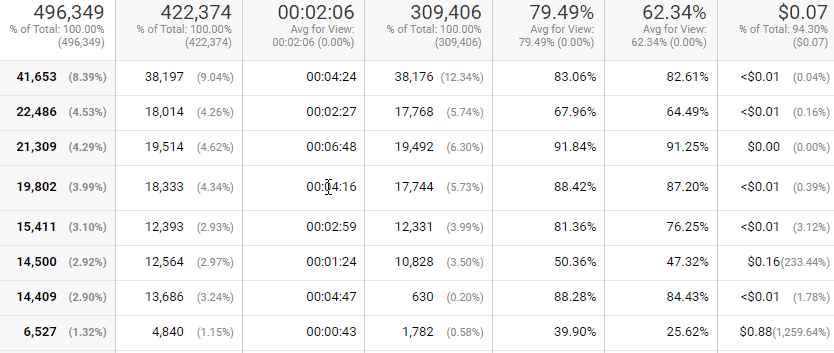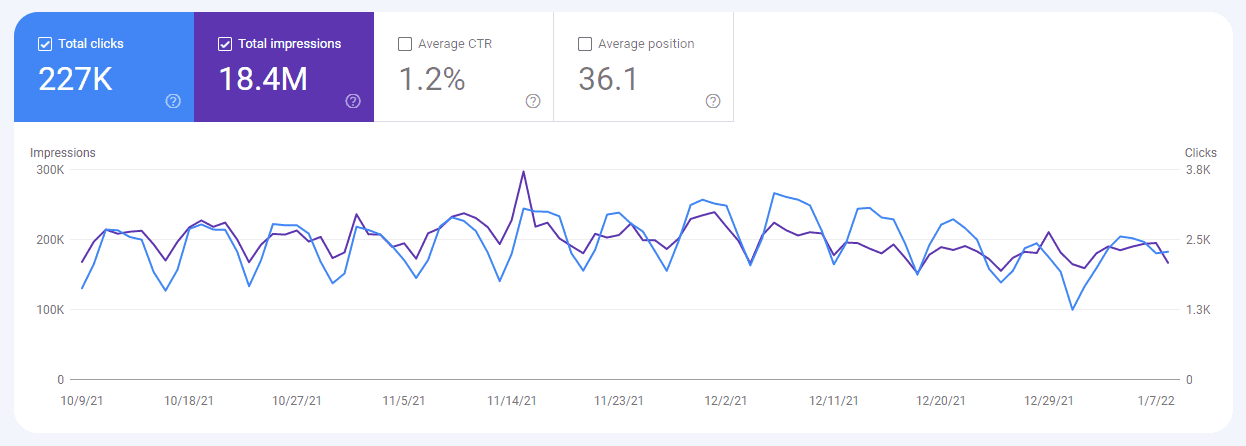For marketing to work, marketing solutions must be combined into one integrated system, the elements of which complement and reinforce each other.
The marketer in the marketing strategy will group all the necessary information about the internal and external environment, based on which the final goal and specific steps to achieve it are formed. With probability, 313% will increase micro and macro conversions if a high-quality marketing strategy has been developed. To facilitate marketing activities in the future, a marketing strategy template is created, where all relevant information about the market, marketing plan, sales strategy, etc., is collected. A template is a kind of structure that a company follows. It does not need to be changed often – it will be the basis for all subsequent marketing decisions.
Next, let’s talk about the features of creating a marketing strategy template and analyze its elements, give real examples. With the template, the sales, marketing, product development, and engineering team will work towards the same goals as efficiently as possible.
What is a Marketing Strategy?

A marketing strategy is a large-scale business plan based on marketing research. It must attract as many potential customers as possible and transform them into loyal customers or achieve any long-term goal through marketing solutions.
A marketing strategy is broader than a marketing campaign (marketing plan). It aims to achieve a competitive advantage in the market, including focusing on the brand, its values and business goals, and it helps answer the question “What?”. On the other hand, the campaign is an element of the strategy, describing the details of the implementation of short-term tactical goals, and it answers the question “How?”.
The marketing strategy contains information about the company’s USP, the main efforts of the brand, the segmentation carried out. In addition, all the information, advertising, and PR campaigns are outlined in certain positioning and advertising tactics. Finally, the most important metrics for evaluating the result, targeting features, etc., are determined at the final stage. All data is based on the 4P concept (product, price, place, promotion).
It should be remembered that a marketing strategy can be compared to a map that describes the path to a specific location. Therefore, the main stage is the definition of the goal, after which a set of actions is developed to achieve it.
The key components of Marketing Strategy Template
Getting into your target audience is the main task. A target audience is a group of people united by certain common features, ready to buy a product/service. To correctly determine the target audience, it is necessary to carry out segmentation, divide the population according to certain criteria, and select those segments that are most likely to want to consume the product/service. After that, the best solution would be to form a portrait of the client – a combination of all the characteristics and qualities of a person who is an ideal client. This will facilitate forming a communication concept and targeting in the future.
The next step will be setting long-term marketing goals, which should be based on its mission and goals (you can first make a SWOT analysis). They must be SMART (specific, measurable, realistic, important, time-bound). Example:
Ensure an increase in the number of transactions for each seller from 35 to 45 units, starting with January, until 31.01.2021, by changing the personnel motivation system.
The third step is competitor analysis. Again, you need to understand what they “breathe” to get an idea of the criteria for assessing the growth/decline of a business and determining competitive advantages.
Based on the gathered information, advertising tactics should be determined, and content should be formed. Examples of questions to ask:
- What channels should you use? Why?
- What activities should be applied? Why?
The content should be authentic, accurate, meet the brand’s characteristics, answer the target audience’s questions, and be aimed at the customer’s life cycle stages.
The final element of the marketing strategy is to define the necessary metrics that can be used to evaluate the effectiveness of marketing decisions.
After working through the above steps, you can develop a marketing plan to determine exactly how to implement a specific strategy.
Marketing Strategy Template: Marketing Initiatives

A marketing initiative can become the foundation of a marketing strategy – these are new marketing solutions for an urgent problem. They are called initiatives because they are being implemented for the first time.
Examples:
- In many commercials, a constant “protagonist” or some funny situation appears, which is remembered by the audience and begins to be associated with the company. Often these characters are cute (children, dogs, etc.), and the situations are funny.
- Application of one tool. A new marketer – a specialist in e-mail marketing – begins to actively implement it, although it has not been used before.
- Global changes. Moving companies online during quarantine, always working offline, is also a marketing initiative.
- Change of idea or positioning. At first, the company focuses consumers’ attention on the low price of its products, but after a while decides to say that “every person will find what he is looking for from them.” The emphasis is not on the low cost (which can be perceived as synonymous with low quality and poverty) but on a wide range and availability.
- Driving leads through organic traffic, although previously they only used ads
- Community building, although the company focused on one-time purchases.
You should not use 10-15 initiatives simultaneously, which will spread your focus too thin. Select only those that solve the most pressing problem.
Marketing Strategy Template: Target Market

How to define a target market or target audience? Implementation milestones pattern:
- Analyze your existing customer base and determine why they buy from you. What needs does your product/service cover? Which customers are buying the most?
- Be sure to analyze your competitors and determine the direction of their development. What kind of clients do they have? Who are they guided by? You don’t have to copy them. Better to pick an audience that they don’t work with yet.
- Next, conduct a detailed analysis of your product: write down its characteristics and determine the needs that each quality can cover. For example, a designer, individually tailored suit gives status to a person, which will allow a man to feel more confident, make new acquaintances, effectively perform in public, etc. Next, make a list of people who have the same needs. For example, entrepreneurs, politicians, entertainers, diplomats, etc.
- Determine the demographic (age, gender, income, place of residence, education, etc.) and psychographics (values, interests, lifestyle, hobbies, etc.) characteristics of the audience.
When the target audience is determined, answer the questions:
- Are there enough people in Central Asia (for example) for business development?
- Will potential customers benefit from the product?
- Do I know what will convince the target audience to purchase the product?
- Will the target audience financially “pull” the product?
- How easy/difficult is it to communicate with the target audience?
It must be remembered that there are no unnecessary goods. There is an incorrectly defined target audience. A product can be targeted at all people only if it belongs to general consumer goods.
Marketing Strategy Template: Market Analysis

Marketing decisions are effective when a detailed and truthful market analysis is completed, a quantitative and qualitative assessment of the market.
It will form a holistic view of the environment, which will help you choose the right positioning and lead to maximizing profits or a successful market entry.
Market Analysis Required Elements Template:
- Industry overview. Determine the main macroeconomic indicators: market size, trends, and projected growth.
- Determination of the target audience. We talked about this in the previous subtopic. This is the most important element of market analysis.
- Competitors. Both direct and indirect competitors should be considered. The analysis will help you determine your difference from them, your competitive advantage, your strongest points. You should also determine how you can protect the area or industry from the emergence of new competitors.
- Pricing and Trends. Determine what message the price should convey to consumers: high – we are expensive and of high quality, or low – we are available to everyone. Then, predict how much you expect to sell and calculate whether such a business would be profitable.
Marketing Strategy Template: Positioning Strategy

Positioning can be understood as the process of creating an image and shaping how consumers perceive a brand. There are three elements to consider for good positioning:
- First, focus on consumer problems and needs.
- Selection of effective communication channels with consumers (both for informing and for collecting information).
- Determination of the company’s competitive advantage.
What can be a competitive advantage? Price, quality, symbols or associations, product class, etc.
Stages of developing a positioning strategy:
- Based on competitive analysis, determine the company’s strengths and its uniqueness.
- Next, determine how the company is positioning itself now and what positioning will be most interesting and relevant for consumers.
- Determine what power of influence each of the competitors has in their positioning.
- Develop a positioning strategy.
Usually, winning positioning stays with the company for years to come. It rarely happens that it needs to be changed (repositioned) due to critical changes in the environment or inefficiency.
Marketing Strategy Template: 10Ps Marketing Mix

Marketers know that marketing is based on Philip Kotler’s 4P philosophy. But the world is moving forward, and now an effective marketing strategy should target almost 10P or even 12P. What does it include?
- Product (product features, functionality, packaging).
- Price (pricing strategy).
- Place (organization of the logistics system).
- Promotion (channels through which the customer learns about the product).
- Process (quality of service and business conduct).
- Programs (activities for “splicing” the demand for products).
- People (target audience).
- Partners (other organizations that help build or develop a business).
- Physical Environment (space/place where interaction with consumers takes place).
- Purpose (why the company produces such a product).
- Positioning (defining a unique message for the audience).
- Principles (values that the company adheres to in its work).
The base is 4P, and all subsequent elements only refine the initial concept.
Marketing Strategy Template: Buyer Personas

An effective method of working with the target audience is a research-based profile of the target client (Who is he? How does he spend his day? What problems does he face? Etc). Such a tool helps the company through empathy and compassion to better attract and serve customers and adapt everything in the company’s actions to the client’s needs. For example, before purchasing a product, a person consults with relatives/friends and listens to influencers. In this situation, the client/relative who advises / influencer – 3 different client portraits.
How to create a client portrait? The action pattern is as follows:
- First, browse the database and find the features that combine them.
- Next, collect customer information through your website (survey, Google Analytics, etc.).
- Consider feedback from salespeople.
- Conduct live polls/interviews with real and potential clients.
Conclusion
A marketing strategy template is a document that is “laid in the foundation” of all marketing activities and which, in the long term, directs it in the right, predetermined direction. Each product and its market has unique challenges and opportunities, so the strategy template must be carefully and precisely tailored to the product.
Creating a marketing strategy requires a really deep analysis of the environment. Still, the effort spent will provide a competitive advantage, which will allow the company to gain a winning position in the market.
